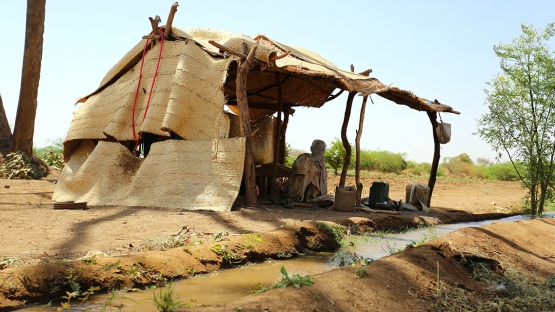The impact of climate change on millions of people in Sudan extends from how it deteriorates soil quality where their food grows to its influence on the spread of disease-carrying insects. Increasingly erratic and extreme weather conditions, rainfall and temperatures jeopardize their food and water resources, their health and livelihoods. To find ways to adapt to and mitigate the impact of climate change, scientists in Sudan are now working with the IAEA, in partnership with the Food and Agriculture Organization of the United Nations (FAO), to use nuclear and conventional techniques to improve soil resilience to produce more food crops, optimize agricultural practices and manage insect pests, among others.
“We are facing very high temperatures in winter, unpredictable weather, and the rainy seasons are becoming very short, making water scarcer. This is all because of climate change,” said El Saddig Suliman Mohamed, Director General of the Agricultural Research Cooperation (ARC) in Sudan, which has four ongoing projects with the IAEA and the FAO. “The work we do to address climate change is made possible in large part because of the IAEA.”
There are several IAEA-supported projects in Sudan that involve nuclear and other techniques to address the diverse impact of climate change. The IAEA, in partnership with the FAO and through its technical cooperation programme, provides equipment, training and technical expertise.
Keep on growing
As more than 80% of people in Sudan practice agriculture and live in rural areas, the new plant varieties bred in the ARC’s Biotechnology and Biosafety Research Center can help farmers continue to grow crops, such as sorghum, wheat and various vegetables, despite increasingly harsh and water-scarce conditions. These varieties are made in part using nuclear techniques. The process involves scientists using radiation on plant seeds, cuttings or leaves to accelerate the natural process of spontaneous mutation. They then mark and cultivate the desired traits to develop plants with specific characteristics. Watch this animation to learn more.










